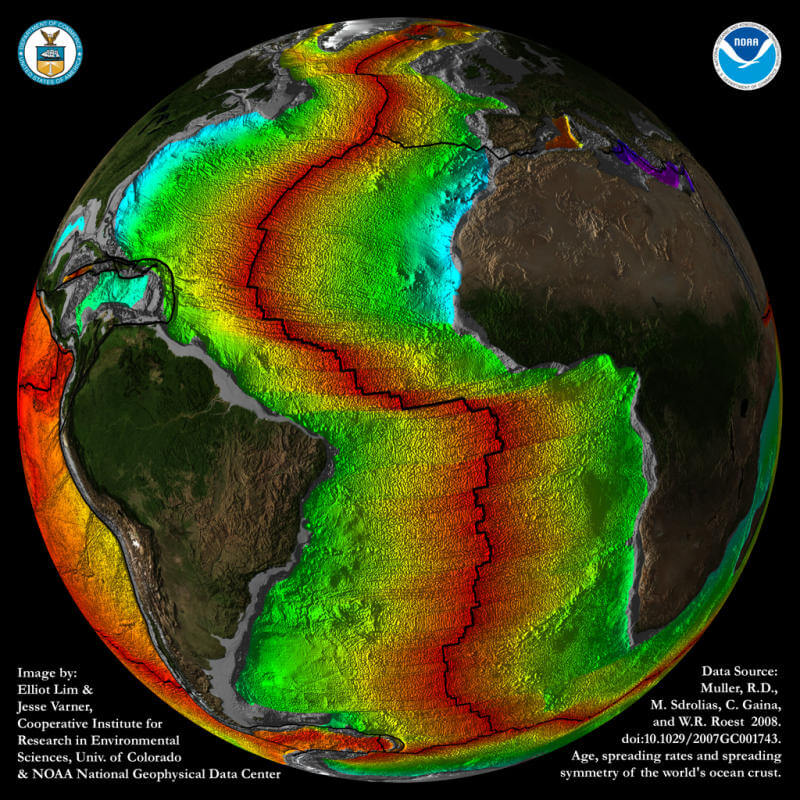This is the conclusion of geologists who discovered the beginning of its activity in a subduction zone (an area where one geological plate falls under a neighboring plate). The discovery explains, among other things, why strong earthquakes occurred there, including one that caused the destruction of Lisbon in the 18th century

A new subduction zone created off the coast of Portugal may lead to the narrowing of the Atlantic Ocean and bring the continent of Europe closer to the continent of North America until they merge in 220 million years. This is according to a study by researchers at the Australian Monash University, published in the journal Geology.
The researchers discovered that margins in the seam between two panels that were considered passive turned out to be active. The North American plate on which the northern part of the Atlantic Ocean also lies falls in this area into the Earth's mantle. Beneath the Eurasian Plate on which Spain and Portugal also lie. In fact, it is a reversal of the process of opening the Atlantic Ocean that has been happening since it was created about 130 million years ago (as can be seen from the correspondence between the coasts of Africa and those of South America).
The lead author of the article, Dr. Joao Duarte, from the School of Earth Sciences at Monash University, said that his team mapped the floor of the Atlantic Ocean and discovered new fractures in the formation and tectonic activity around the edge of the Iberian plate (which is connected as mentioned to the Eurasian plate), which will cause for its attraction probably towards the southwest. "What we discovered is the beginning of an active margin, that is, a fetal reduction zone," said Dr. Duarte.
"Significant seismic activity, including the earthquake that destroyed Lisbon in 1755 indicated the possibility of tectonic movement in the area. For the first time, we were able to provide not only evidence that this is indeed the case, but also what the mechanism is that drives this activity."
The emerging subduction zone in the Iberian Peninsula region could signal the beginning of a new phase of the Wilson cycle - in which the movement of the plates may again lead to a supercontinent situation like in the period about 200 million years ago when there was only one continent on Earth - Pangea. The movement of the plates caused the subsequent breakup into continents that moved slowly to the location we know today. According to the researchers, the new subduction zones will cause the oceans to close and reconnect the scattered continents into one large continent, where the continents are arranged in a different order and position than those of Pangea.
This disintegration and updating of the subduction zones occurred three times in the history of more than four billion years of the earth's existence. The process of closing the Atlantic Ocean and the approximation of Spain and Portugal to the USA will last about 220 million years. According to the researchers, the findings provide a unique opportunity to examine the process by which the passive margins of the plates become active - a process that will take approximately 20 million years. Even at this early stage of the formation of the subduction zone, essential data can be extracted from it to improve the Earth's geology models - for greater accuracy in predicting areas prone to earthquakes.
"Understanding these processes can certainly provide new insights into how subduction zones were formed in the past and how the oceans began to close," said Dr. Duarte.

4 תגובות
In fact there is no actual proof of the reduction theory that was invented as an addition to the theory
The movement of the continents, which also has no actual proof.
Different researchers use the displacement data of limited areas and get all kinds of data,
Sometimes they are contradictory... if you add up all the displacement data, you get that the earth has grown by about 4 cm
per year in its diameter and there is no reduction but an uneven expansion between the continents.
But this subject is taboo in contemporary geology.
Right now, in 110 million years it will only take 3.5 hours.
220 million years?! Until then we will have to fly 7 hours from London to New York? it's unacceptable